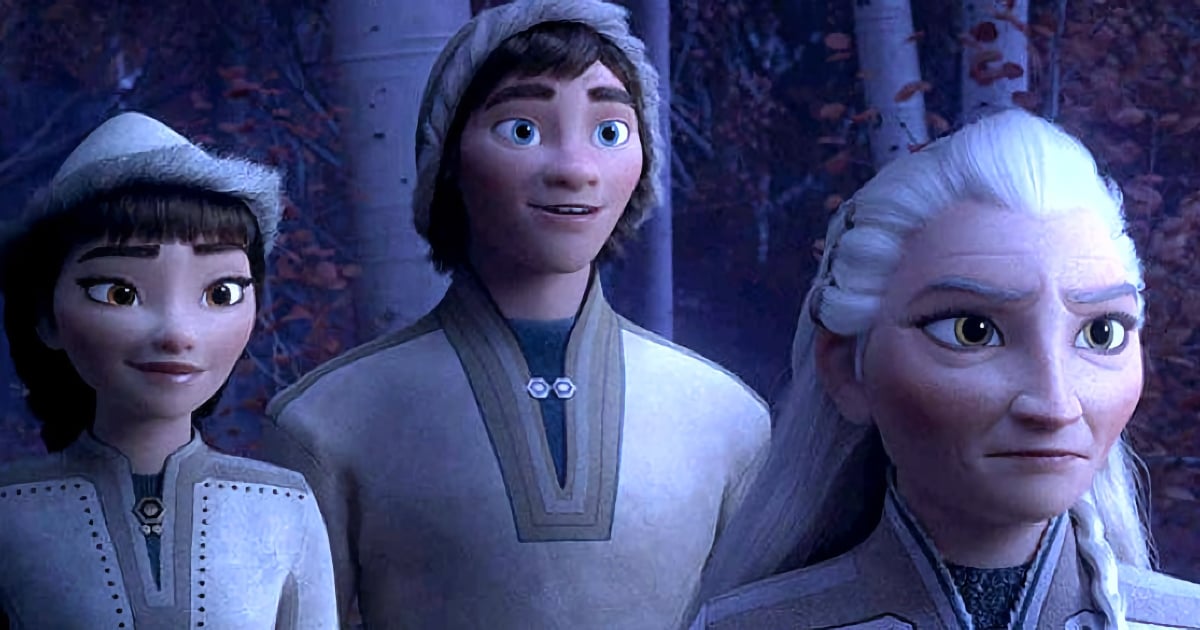
Dec 5, 2019 12:00:00 AM
by Gina Caneva
As I sat with my 7-year-old daughter and her friends in a movie theater for a showing of "Frozen II," I was fascinated. No, it wasn’t with the autumn scenery, or Olaf’s comedic retelling of the first Frozen, or of Elsa and Anna’s acts of heroism during the climax of the film. Instead, I was highly satisfied with the way they portrayed the indigenous tribe of the Northuldra and their relations with the mostly white leaders of Arendelle.
Spoiler Alert.
The scene in particular that my daughter spoke to me about afterward was the scene where Anna and Elsa’s grandfather raised his sword above an innocent Northuldra leader’s head while he was unarmed. On the way home from the movie theater, she said, “Mom, why would their grandfather do that? I mean he didn’t have any weapons. He wasn’t trying to hurt the grandpa. And then they lied about the story.”
As a high school teacher and librarian for the last 16 years, I am used to helping students dispel myths about Indigenous peoples that their elementary schools have worked so hard to keep alive. I can remember my very first high school teaching experience during my pre-service time when I created activities surrounding Howard Zinn’s first chapter of A People’s History of the United States where Zinn details Christopher Columbus’ supremacist views of the Indigenous Arawaks and his eventual brutal takeover, as he and his men turned most Arawaks into slaves and killed those who didn’t follow suit.
Just as I was when I read Zinn for the first time as a junior in college, my students at Crane High School in Chicago were shocked. They wrote journal entries about how surprised they were that Columbus had killed Arawaks. In elementary school, their experience was similar to mine. We had both learned that Columbus sailed the ocean blue in 1492. We memorized that rhyme and that date—and the lie that Columbus discovered America.
How could Columbus discover a place that was already inhabited? This was a question we were too young to ask.
Even this past November, which ironically houses Thanksgiving and is Native American Heritage Month, a colleague asked me to curate some materials for her class to showcase Native American’s feelings on Thanksgiving.
While visiting her classes for book talks, I asked her students how many books they had read in their lives written by Native Americans or with Native American characters. In one of her classes, only two students raised their hands.
It made me realize that the erasure of indigenous histories and unfamiliarity with their literature continues even in an educational world that claims to embrace culturally responsive teaching practices.
But how early is too early to learn about the unethical and violent histories of our American past? If we are creative enough to turn invasion and occupation into “discovery” and domination and genocide into “peaceful relations,” we can be creative enough to tell the truth in a way that can be understood by seven-year-olds.
To my own daughter, who asked me rather clearly why a White male character would raise his sword to strike an unarmed Indigenous character and then lie about it, I told her a loftier version of the truth. “Their grandfather wanted power and control. That’s why he killed the elder. It is very much like what happened here in America to Native Americans.”
“It did?” she replied.
“Yes,” I confirmed. I continued to give her small details on the ride home of the history, and then searched and purchased elementary level books by Indigenous authors for her and my five-year-old son to read.
I later read that Disney had consulted with representatives from the Scandinavian Sami culture before making the film. Imagine if textbook companies and teacher colleges would do the same, or even better, ensure that Indigenous writers and historians are included as voices in those textbooks or on faculty at teachers’ colleges. In this case, it is my hope that school begins to imitate art; we should be able to trust our schools’ lessons of Indigenous peoples more than we do images on the big screen.
Gina Caneva is a 14-year Chicago Public Schools veteran who works as a teacher-librarian and Writing Center Director at Lindblom Math and Science Academy. She is a National Board Certified teacher and Teach Plus Teaching Policy Fellowship alum. She has her M.Ed in Literacy, Language, and Culture from the University of Illinois at Chicago and writes extensively on education topics.
The story you tell yourself about your own math ability tends to become true. This isn’t some Oprah aphorism about attracting what you want from the universe. Well, I guess it kind of is, but...
If you have a child with disabilities, you’re not alone: According to the latest data, over 7 million American schoolchildren — 14% of all students ages 3-21 — are classified as eligible for special...
The fight for educational equity has never been just about schools. The real North Star for this work is providing opportunities for each child to thrive into adulthood. This means that our advocacy...
Your donations support the voices who challenge decision makers to provide the learning opportunities all children need to thrive.
Ed Post is the flagship website platform of brightbeam, a 501(c3) network of education activists and influencers demanding a better education and a brighter future for every child.
© 2020–2024 brightbeam. All rights reserved.
Leave a Comment